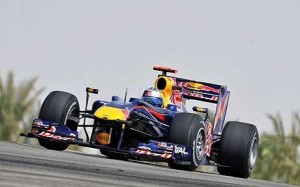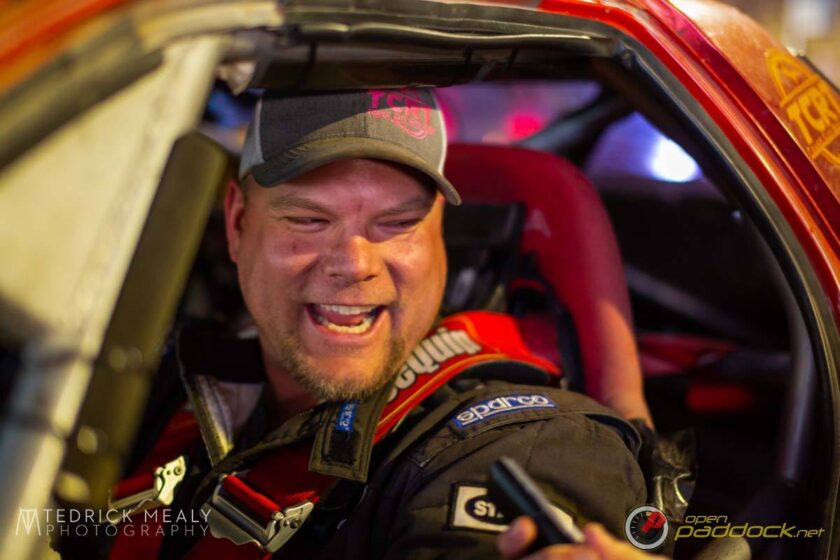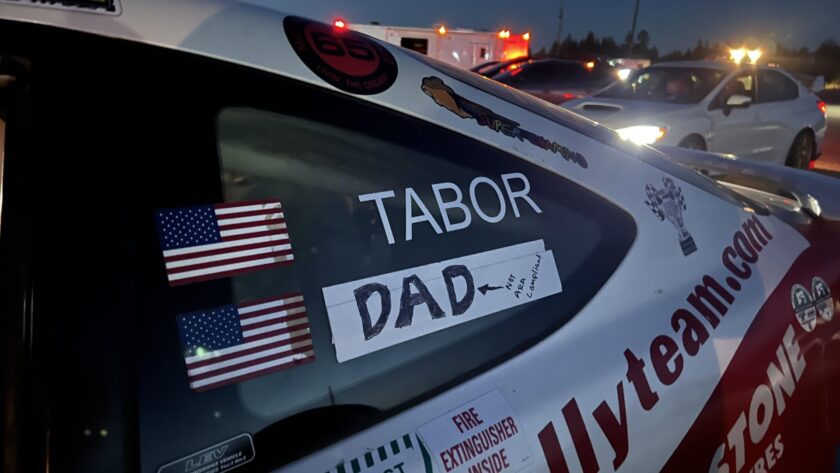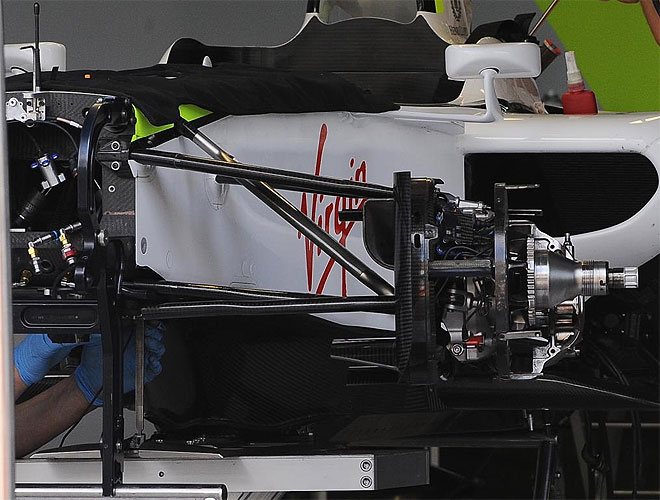 It has now being reported that the left torque drive was the reason for Sebastian Vettel’s retirement down under this weekend. This coming out as Brembo says their brake system was in fact not at fault for what happened to the 22 year old star. Below is a segment of the press release from Brembo:
It has now being reported that the left torque drive was the reason for Sebastian Vettel’s retirement down under this weekend. This coming out as Brembo says their brake system was in fact not at fault for what happened to the 22 year old star. Below is a segment of the press release from Brembo:
“With regard to the retirement of the Red Bull Racing’s driver Sebastian Vettel during the Grand Prix of Australia, Brembo communicates that the cause of his exit in Turn 13 was not caused by the braking system supplied by Brembo, as some publications have reported. Red Bull Racing has confirmed that Sebastian Vettel retired from the Australian Grand Prix after the torque drive between the front left axle and wheel was lost.”
Regardless of what broke on this car, they need to fix it or face a repeat of what happened last year. The thing I find odd is that this is the second time in two races that Red Bull has missed the diagnosis of the problem until the week following. It was not like they get the car back and find out what broke, they report it on like Tuesday that it was something else. I am feeling the need for some changes on that team if they are to be successful. Somebody on the team is clueless and needs some guidance.
I have started to see another interesting trend on some of the community sites. Why is this happening to Mark Webber? Granted Webber ripped the front end off the car this weekend, a majority of the Red Bull failures happened to Vettel dating back to last season. Is Vettel too hard on the car? He jumps out to huge leads and then the car eventually just stops about halfway through the race. Is he too tough on the car or is it simply a prototype part issue? Placing new bits on the car for Vettel and they all happen to be pretty much flat wrong. We shall move on to Malaysia and find out.




Would someone tell me what a “torque drive” is? Is it something that transmits steering input to the wheel or is it a suspension element? I cannot find anything on it online, and the term is new to me.
Thanks.
Pretty new to me as well. In a very very basic definition, I believe that the torque drive helps the axle actually deliver the torque to the wheel and helps the wheel rotate so as the axle does not snap or bend from the power.
I could be completely wrong with that definition, but that is the way I understood it. Malte may have a better definition as he did well on the F duct question that Mike and I were debating on the last show.
Only problem with that definition Shaun is that there is no “power” being delivered to the front wheels. And while we are at it, what do they mean by axle? Front wheels usually have what is normally called a hub. Have to admit I’m not overly familiar with the construction of a modern F1 car in this area but, the wording seems odd to me.
http://www.f1technical.net/articles/mech/images/brake-str3.jpg
I think they are referencing the center of this photo on the right or what is often called the “stub axle” on the rear driving wheels.
Usually (at least from what I am familiar with) there are usually studs(picture on the left) that align with holes on the back side of the wheel that “lock” the wheel to the hub. The holes on the back of the wheel are usually in the same pattern as the holes surrounding the center “axle” but located on the brake hub in the picture on the right.
Maybe what Brembo and RBR are referring to is a failure of these studs.
Not entirely sure nor do I understand the terminology used as it applies to a front wheel.
Sorry Alan, wrong use of power…after thinking about it, what I should have said was when power is delivered to the rear wheels, the torque drive then helps with the ensuring the front stays rigid. So as if the front of the car does not contort under the power being delivered and snap the fragile front axle when the body twists under pressure. I could still could be wrong and you may be right with those studs. I will try to seek a higher council on this topic.
Torque drive could be referring to the taper that the wheel locks onto on the stub axle. There are no studs, the wheel can fit in any rotation, it simply relies on the torque of the wheel nut to lock it on the taper. There is more torque or turning drive on the front than the driven rear wheels because all the drive on that axle is caused by the braking. If the wheel slips on the taper, then there would be no braking on that wheel. Hence the “torque drive between the axle and wheel is lost”.
I think Alan has the right interpretation here. What we might think of as wheel studs couple the rotor/hub assembly to the rim. On our street cars, this role would be performed by the lug studs. There was some speculation that the wheel nut was improperly tightened which could have placed an abnormal amount of stress on the wheel studs causing a failure, much like improper tightening of lug nuts on a street car can cause the lug bolts to fail. However, if the wheel studs fail, the wheel nut still remains in place. The rim and rotor just decouple causing a loss of braking power. Apparently, the team has determined that the wheel nut was in fact tightened correctly, so the problem must lie elsewhere. It may be that there was simply a defect in one of the studs causing it to fail. That could have induced the vibration that Vettel had commented on prior to the incident. Once one stud fails, the loading on the remaining studs would have increased causing further failures.
Could the team have found the error with enough preinstall testing? Sure, but there’s a question of cost vs benefit. It might have been a crack that could have been identified by visual inspection, but it could just have easily been an internal defect that could only have been found through x-ray testing or some similar imaging method.
EDIT: Mut, I see what you’re meaning. I must admit that I would never have expected a simple friction fit between the stub axle and the rim. I think Alan and I were looking at an old image.

I found a good image of last year’s Brawn front assembly, and as you say, there are no studs, at least not protruding far enough to engage the rim.

I still find it amazing that a friction fit locks the front wheel in place under the severe braking that an F1 car undergoes.
[…] […]
I have serious doubts about friction lock. But…. maybe. I would think that every wheel and hub combination would have to be lapped in order to ensure a precise fit and even then I think you are talking about some serious torque on the wheel nut.
I’d be afraid of either distortion because of the level of torque needed to keep the wheel in place or big problems with stripped threads.
Of course this is F1 we are talking about. They may have a guy who does nothing but lap wheels and hubs all day long. Might have a way of getting an answer on this as I know some one who knows some one who owns a company that manufactures allot of super tight tolerance parts for most of the F1 paddock.